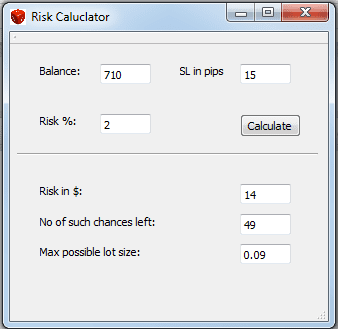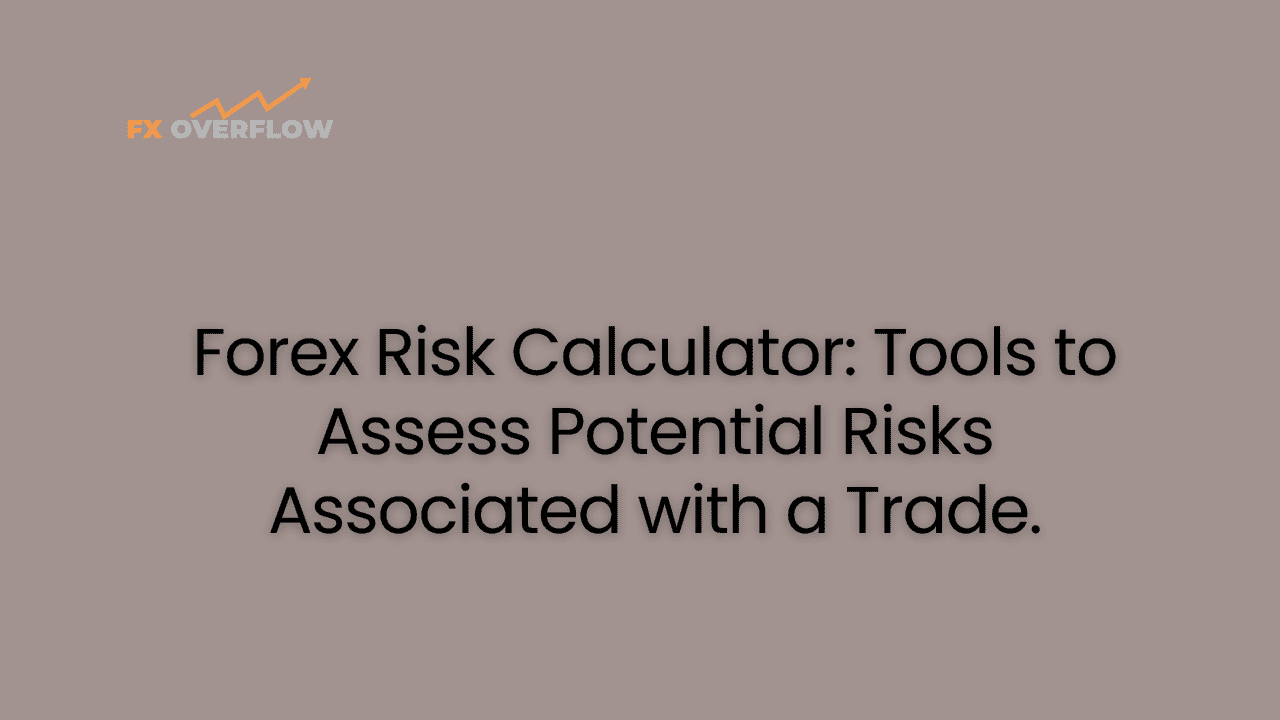Forex Risk Calculator: Tools to Assess Potential Risks Associated with a Trade.
The foreign exchange (Forex) market is known for its immense potential for profit, but it also carries a significant level of risk. Traders need to be cautious and well-informed to avoid significant losses. One crucial aspect of successful Forex trading is managing risk effectively. In this comprehensive guide, we will explore the importance of Forex risk calculators and how they can help traders make informed decisions. We'll cover everything from the basics to advanced techniques, empowering you to become a more confident and successful Forex trader.

Table Content
1. What is a Forex Risk Calculator?
2. Understanding the Importance of Risk Management in Forex Trading
3. The Basic Components of a Forex Risk Calculator
4. How to Use a Forex Risk Calculator
5. Advanced Risk Management Strategies
6. Common Mistakes to Avoid
7. FAQs
What is a Forex Risk Calculator?
A Forex risk calculator is a powerful tool that helps traders analyze potential risks associated with their trades. It allows you to determine the appropriate position size for each trade based on your risk tolerance and the specific parameters of the trade, such as entry and stop-loss levels. By using a risk calculator, traders can ensure that they are not risking more than a predefined percentage of their trading capital on a single trade.
Understanding the Importance of Risk Management in Forex Trading
Before delving deeper into Forex risk calculators, it's essential to understand the significance of risk management in Forex trading. Effective risk management ensures that you protect your capital from excessive losses and can continue trading in the long run. It involves setting appropriate stop-loss levels, diversifying your trades, and using position sizing strategies.
The Basic Components of a Forex Risk Calculator
A comprehensive Forex risk calculator typically consists of the following components:
1. Account Currency
The account currency is the currency in which your trading account is denominated. This is the currency you will be risking on a trade.
2. Account Balance
The account balance is the total amount of money you have in your trading account.
3. Risk Percentage
The risk percentage is the maximum percentage of your trading capital that you are willing to risk on a single trade. Typically, professional traders recommend risking no more than 1-2% of your capital per trade.
4. Entry Price
The entry price is the price at which you plan to enter a trade.
5. Stop-Loss Price
The stop-loss price is the price level at which your trade will automatically close if the market moves against you.
6. Pip Value
The pip value represents the monetary value of a single pip movement in the currency pair you are trading.
How to Use a Forex Risk Calculator
Using a Forex risk calculator is relatively straightforward. Here's a step-by-step guide on how to utilize this valuable tool:
Step 1: Enter Your Account Information
Enter your account currency, account balance, and the risk percentage you are comfortable with.
Step 2: Define Trade Parameters
Specify the entry price and stop-loss price for the trade you are considering.
Step 3: Calculate Position Size
The risk calculator will instantly calculate the appropriate position size for your trade based on the given parameters and your risk tolerance.
Step 4: Evaluate the Results
Review the calculated position size and ensure it aligns with your risk management strategy.
Advanced Risk Management Strategies
1. Risk-Reward Ratio
The risk-reward ratio is a critical metric that compares the potential profit of a trade to its potential loss. It helps traders assess whether a trade is worth taking based on the potential reward relative to the risk.
2. Trailing Stop-Loss
A trailing stop-loss is a dynamic stop-loss that adjusts as the trade moves in your favor. It locks in profits and protects you from giving back gains if the market reverses.
3. Diversification
Diversifying your trades across multiple currency pairs and different market conditions can help spread risk and reduce the impact of losses.
4. Correlation Analysis
Understanding the correlation between currency pairs can help you avoid taking highly correlated trades that magnify risk.
Common Mistakes to Avoid
1. Overleveraging
One of the most common mistakes among novice traders is overleveraging, which can quickly deplete your trading account.
2. Emotional Trading
Emotional decision-making can lead to impulsive and irrational trading, often resulting in significant losses.
3. Ignoring Risk Management
Neglecting risk management can expose you to unnecessary risks and jeopardize your trading career.
4. Chasing Losses
Chasing losses in an attempt to recover quickly can lead to even more substantial losses.
FAQs
Q: What is the ideal risk percentage for Forex trading?
A: The ideal risk percentage for Forex trading is typically around 1-2% of your trading capital per trade. This ensures that you can withstand a series of losses without depleting your account.
Q: Can I use a Forex risk calculator for other financial markets?
A: While Forex risk calculators are specifically designed for the Forex market, you can apply similar risk management principles to other financial markets as well.
Q: Are there risk calculators for automated trading systems?
A: Yes, many trading platforms and software include risk calculators as part of their functionality, especially those designed for algorithmic and automated trading.
Q: Should I use a fixed position size for all trades?
A: It's generally advisable to adjust the position size for each trade based on the specific parameters and risk-reward ratios.
Q: Can a risk calculator guarantee profitable trades?
A: No, a risk calculator cannot guarantee profitable trades, but it can significantly improve your risk management and protect your capital from excessive losses.
Q: How often should I reassess my risk management strategy?
A: It's essential to reassess your risk management strategy regularly, especially when market conditions or your risk tolerance change.
Footnote
In Summary, a Forex risk calculator is a vital tool for any serious Forex trader. It empowers you to manage risk effectively, protect your trading capital, and make informed decisions. By following the principles of risk management and using the advanced strategies mentioned in this guide, you can enhance your trading performance and achieve long-term success in the dynamic world of Forex trading.
Remember, successful trading requires discipline, patience, and continuous learning. By incorporating risk calculators into your trading routine and embracing a well-rounded approach to risk management, you can position yourself for profitable and sustainable trading ventures.











Discussion